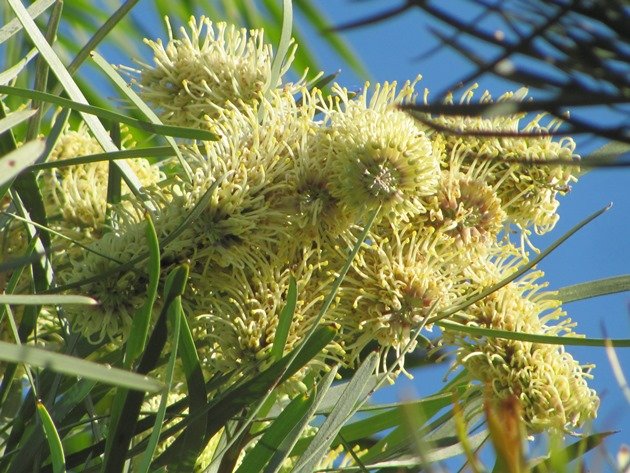
It is very easy when writing about birds to ignore the birds you see most often and there are more examples than I care to mention! When we planted trees, shrubs and bushes in our garden in Broome we aimed to have as many native plants as possible to maximize the number of species of birds that we would attract. The above photo shows one of our native plants-a Hakea-in full flower and the nectar attracts all species of honeyeaters. The other big factor in attracting birds to your garden in such a hot climate is plenty of water for birds to both drink and bathe in. The honeyeaters are mainly attracted to our flowering natives and we aim to always have something in flower for them. The first honeyeater that we hear each morning is the White-gaped Honeyeater, which always appears to be awake and vocal before most other birds around where we live. The first honeyeaters to enter our garden each morning are the Brown Honeyeaters and they are also the most vocal when a Brown Goshawk enters the garden with their tut-tutting! They enter in quite large numbers of up to two dozen especially on very hot days. The second honeyeater to enter the garden each day is invariably the Singing Honeyeater, though in smaller numbers. Not only are they attracted to the flowering plants, but they come in to have a drink and enjoy the water we provide. It is also important to provide something in the water to enable the birds to judge the depth, because they will then be less cautious and enter it to bathe.
Singing Honeyeater enjoying our water!
In among all these honeyeaters we get the occasional Rufous-throated Honeyeater and also the Black-chinned Honeyeater. Almost all birds enter our garden via our “pretend power line“!


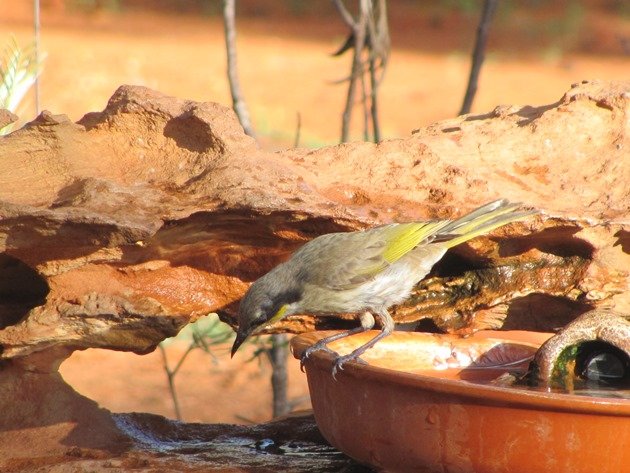
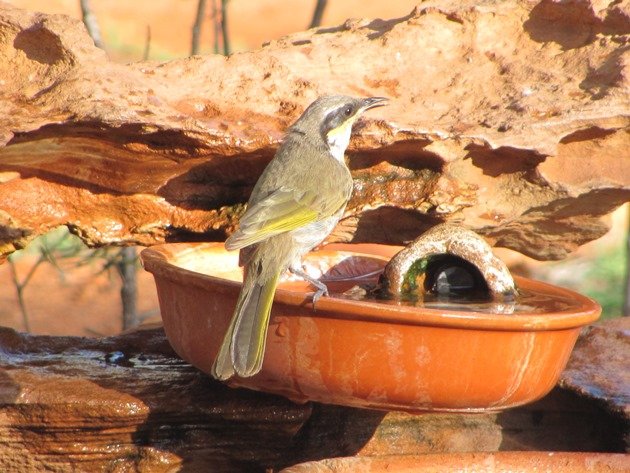
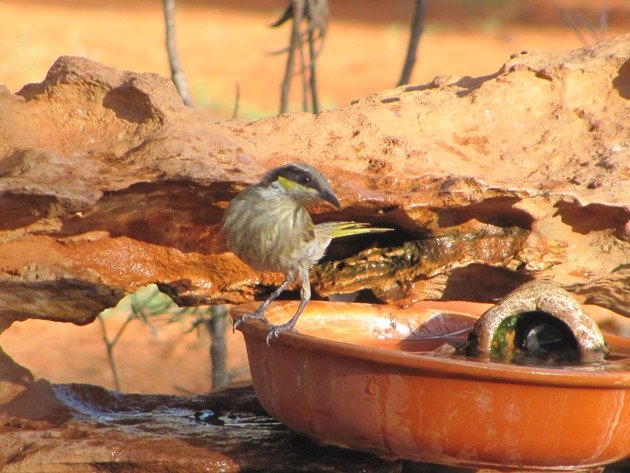
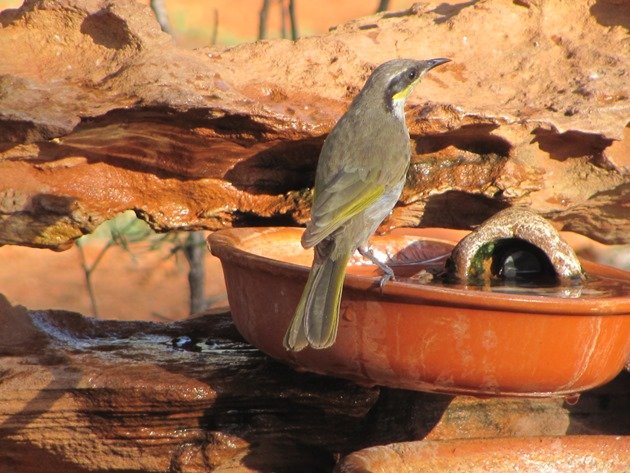











I got my lifer one of these near Melbourne a few weeks ago.
That’s a magnificent honeyeater! When I was in Australia I learned that honeyeaters have a brush-like tongue for obtaining nectar. How unusual!
Great!
Yes, they are well adapted to collecting nectar!
From the little you have shown us, you truly have a “back Yard” to be envious of!! Very well done!
Thanks…with over 100 bird species flying in or over our garden we can’t complain at all! Water and native plants being the main attraction!